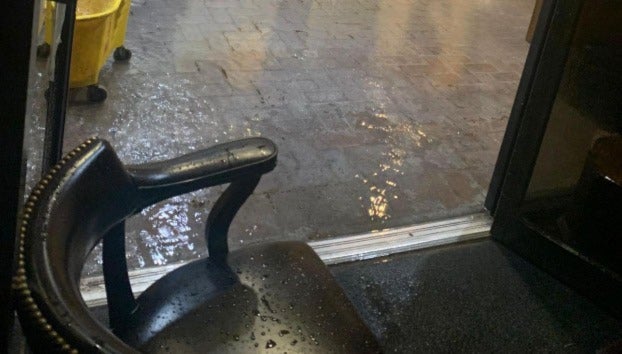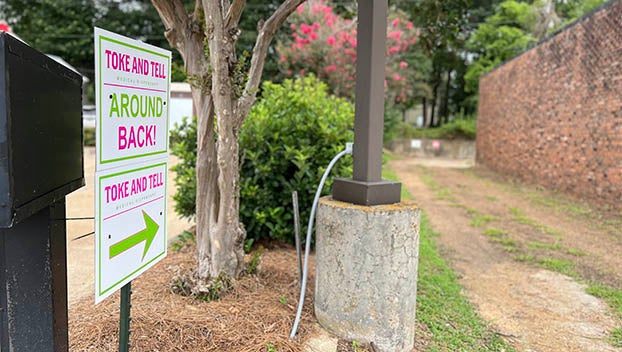District refutes absenteeism study
Published 1:18 am Monday, February 29, 2016
NATCHEZ — The Natchez-Adams School District was one of two systems to have at least two schools crack the top 20 worst schools in chronic absenteeism.
Chronic absence is a statistic published by the Mississippi KIDS COUNT from Mississippi Department of Education data. It measures the percentage of students who missed 10 percent or more of the school year — at least 18 days — including excused and unexcused absences.
Natchez Freshman Academy, at 41.8 percent of students being chronically absent from class, topped the list for the district and was in ninth place overall. It was followed by Natchez High School at 35.9 percent, which placed it at 17th in the state.
The chronically absent percent for other schools in the district were Morgantown Arts at 29.5 percent; Susie B. West Elementary School at 20.4 percent; McLaurin Elementary at 17.2 percent; Joseph L. Frazier at 14.2 percent; and Robert Lewis Magnet at 11 percent.
The No. 1 school in the state in chronic absence is Ruleville Central High in Sunflower County at 55.4 percent. The lowest percent in the state is 0, belonging to Jonestown Elementary in Coahoma County.
The data is from the 2013-14 school year. Last year, KIDS COUNT released data focused on the district level for the same school year, and Natchez Adams was No. 1 in the state with 26 percent. The average in the state was 15 percent.
Following the 2015 report, Superintendent Frederick Hill refuted the claim, stating the district had an attendance percentage of more than 93 percent.
“I was unable to receive clear information from the report’s source,” Hill said following the release of the 2016 data. “However, as it still stands, the data we received from the Mississippi Department of Education is contrary to that source’s data.”
District spokesperson Steven Richardson said some factors may explain the difference.
“The absenteeism numbers are inclusive of many factors, not just that a child did not come to school that day,” he said. “A child just may not have been at school long enough that day to be marked present.”
The study also used data from the third grade Mississippi Curriculum Test, Second Edition English language from the spring of 2014. More than half (53 percent) of students who were not chronically absent during K-3 years scored proficient. In comparison, 60 percent of their peers who were chronically absent during this time period fell below the proficient level.
“I am thankful for the work of education partners like Mississippi KIDS COUNT to improve student achievement in the state. I hope that school and district leaders will review their data and formulate a plan to reach out to the students and parents and stress the critical importance of school attendance,” said Dr. Carey Wright, state superintendent of education, in a statement.
The Natchez-Adams District is working with parents to encourage them to have their children at school on time, Richardson said.“We post at our schools the restrictions on checking in and out a child before and after certain times,” Richardson said. “We continue to offer students incentives to come to school and remain there such as recognizing students with perfect attendance awards and celebrations.”
Hill said the district takes attendance and meeting those goals seriously.
“We have an attendance officer assigned to the district,” he said. “Instead of just sitting around and waiting for students to return, she proactively works with parents to get students not only to come to school but also to remain in school.”
The district is also working up alternative paths to keep students involved, the superintendent said.
“One recent option is a new culinary arts class for our students through a partnership with Co-Lin,” Hill said. “This class among many other classes we are exploring will aid in capturing the interest of students to continue coming to school.”
Alternative routes for students who can’t make regular classes for whatever reason include extended school day and ombudsman.
“During extended school day, students can take online courses that meet the state’s requirement for Carnegie units,” Richardson said. “At ombudsman, students can recover credits and catch up with their peers. Ombudsman is not just a school for students with disciplinary issues; it also is a school to help students who are behind catch up with their peers.”
The data suggests that students who missed less than two days in September had the lowest rate of chronic absenteeism for the year (7 percent) compared to those who missed either two to four days (38.8 percent) or more than four days (77.1 percent).
“These findings provide an unprecedented opportunity for parents, schools and communities to improve school attendance for Mississippi’s children,” said Dr. Linda Southward, director of Mississippi KIDS COUNT, in a statement. “The research is clear — the earlier that absences are identified and addressed with systemic changes, the more successful the students will become.”





